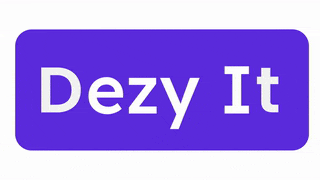How to get UX design right for B2B SaaS
- Chinmayee
- Nov 12, 2022
- 4 min read

We might have witnessed UX/UI design being treated as an afterthought in the establishment of many businesses but not now. In a world where a circular illustration (a logo) has to depict what your million-dollar firm does, designs especially that of UX/UI have become the flag-bearers of user engagement.
How is B2B Different from B2C?
The answer is that they are as different as building a car and building a commercial aircraft. Both sound like they are parts of the same field. However, both have entirely different purchase and ownership norms, user expectations, and manufacturing time.
The Challenges You Face and the Solutions to Them:
1. Functional complexity
While designing UX for B2B, the complexity scale is higher. This emerges from innumerable factors like multiple user collaboration and integration with other software. Every new element added to the design features goes through its own set of other requirements and functionality checks.
What should you do?
The solution to complexity is indeed simplicity. However, this should not be misunderstood by the simplicity of the interface. This entails the simplicity brought by processes and planning. Investing in design thinking plays a very important role in the process since bringing in a set of requirements and specifications is carried out through it. It will be safe to say that design thinking is a part of the design itself.
Time should be given to understand your own ideas and implications at the grass root level so that the provision of a future-friendly and bug-free product experience is ensured. Dezy It fosters exactly the kind of product experience needed.
2. Designing according to the mindset
A B2C user has efficiency in mind while getting his work done. Enterprise users, on the other hand, let their minds revolve around and look for more wants to get fulfilled like Brand growth, learning, and success of the organization. Therefore, professionality and a well understanding of the enterprise's context are what is needed to produce for them. Their requirements also include workflow, environment aspirations, and solutions to emerging problems.
How to ace this?
While designing anything for an enterprise, it is required to give the client not just the product but also something that enhances their name and helps them achieve their goals. Developing empathy for them and talking to end users is one of these requirements that the customer wants to get fulfilled but does not sometimes even realize it.
It is therefore needed to keep a check on where the customers are struggling and how to direct them towards solving the issues.
3. Convincing the enterprise
Sometimes the enterprises you are designing for are too comfortable and habitual with the workflow. Such companies obviously resist opting for a new product even if it looks like it could really help them. Even if a few are convinced, an enterprise is made up of a cluster of people who all need to reach a consensus and vote for the adoption of it. Migration of data also becomes a challenge for such enterprises. And switching prices of enterprise apps are considerably higher than usual.
How to cater to this?
The first biggest way to accomplish selling your app or services to an enterprise starts by being fuller of features and functionalities that are of a higher level than the competitors in the field-aligned to yours. Even the product can be updated and improved in accordance with the enterprise’s needs. This can be done by making the workflow faster, better, and more engaging. All of which is possible with the help of Dezy It.
Organizations worship productivity and workflow. This can only be carried out if thorough research before the laying down of the foundation stone of assessing and then rebuilding. One should take a good and wide look at what sort of products the enterprise uses and where those products lack. After finding where and what they have been struggling with, they can be presented with better and more feasible options. Fronts like faster workflows, cutting on investments, and an increase in efficiency often make enterprises jump toward the opportunity.
Principles to Get You Through Challenges B2B UX Design Presents:
While you’re at it, here are three guiding principles that help:
1. Embrace adaptability and sustainability:
Anything you come up with should have a way of evolving and growing. Current need elements do not do the job singlehandedly. Elements have to be accompanied by the belief that they are adaptable to the needs of the future.
2. Establish improvement cycles:
The best trick to build something is assessing its mechanisms with time and making necessary improvisations while moving forward. Lay down focused design iterations and actionable problems and make alterations and changes wherever needed.
3. Think holistically:
Every product or service you put out has to be centred with the company’s objective in mind. Every project should be completed while thinking holistically about the brand so that it adds to or upgrades the user’s experience with it.
FINAL WORDS
If you are an enterprise, and if faster workflows, cuts in costs, and boosted efficiency is what you are aiming for, Dezy It has just the thing for you!
We at Dezy It have gone through the workings of an enormous number of firms and having one hell of an experience in the same, we are now a pro at encircling the struggles every enterprise has to deal with and provide relevant solutions. This is why we have come up with offering better UX/UI for brands, websites, platforms, and applications.
There isn’t ONE UX provider in the sub-continent that you could trust over us in the field of serving the needful and cementing any cracks that come in the way of your enterprise touching the sky!
Don’t believe us? Give us a chance!
Click here, to get the answers you have been looking for a long now.





Comments